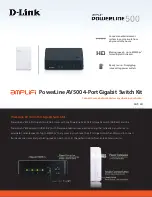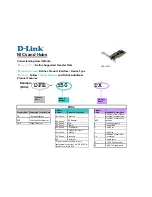
Chapter 24 IP Source Guard
GS-2750 User’s Guide
197
24.1.1.3 DHCP Relay Option 82 Information
The Switch can add information to DHCP requests that it does not discard. This provides the
DHCP server more information about the source of the requests. The Switch can add the
following information:
• Slot ID (1 byte), port ID (1 byte), and source VLAN ID (2 bytes)
• System name (up to 32 bytes)
This information is stored in an Agent Information field in the option 82 field of the DHCP
headers of client DHCP request frames. See
Chapter 29 on page 233
for more information
about DHCP relay option 82.
When the DHCP server responds, the Switch removes the information in the Agent
Information field before forwarding the response to the original source.
You can configure this setting for each source VLAN. This setting is independent of the
DHCP relay settings (
Chapter 29 on page 233
).
24.1.1.4 Configuring DHCP Snooping
Follow these steps to configure DHCP snooping on the Switch.
1
Enable DHCP snooping on the Switch.
2
Enable DHCP snooping on each VLAN, and configure DHCP relay option 82.
3
Configure trusted and untrusted ports, and specify the maximum number of DHCP
packets that each port can receive per second.
4
Configure static bindings.
24.1.2 ARP Inspection Overview
Use ARP inspection to filter unauthorized ARP packets on the network. This can prevent
many kinds of man-in-the-middle attacks, such as the one in the following example.
Figure 95
Example: Man-in-the-middle Attack
In this example, computer
B
tries to establish a connection with computer
A
. Computer
X
is in
the same broadcast domain as computer
A
and intercepts the ARP request for computer
A
.
Then, computer
X
does the following things:
• It pretends to be computer
A
and responds to computer
B
.
• It pretends to be computer
B
and sends a message to computer
A
.
As a result, all the communication between computer
A
and computer
B
passes through
computer
X
. Computer
X
can read and alter the information passed between them.
A
X
B
Summary of Contents for GS-2750
Page 2: ......
Page 7: ...Safety Warnings GS 2750 User s Guide 7 This product is recyclable Dispose of it properly ...
Page 8: ...Safety Warnings GS 2750 User s Guide 8 ...
Page 26: ...List of Figures GS 2750 User s Guide 26 ...
Page 32: ...32 ...
Page 40: ...Chapter 2 Hardware Installation and Connection GS 2750 User s Guide 40 ...
Page 48: ...48 ...
Page 58: ...Chapter 4 The Web Configurator GS 2750 User s Guide 58 ...
Page 64: ...Chapter 5 Initial Setup Example GS 2750 User s Guide 64 ...
Page 70: ...Chapter 6 System Status and Port Statistics GS 2750 User s Guide 70 ...
Page 82: ...Chapter 7 Basic Setting GS 2750 User s Guide 82 ...
Page 84: ...84 ...
Page 120: ...Chapter 11 Spanning Tree Protocol GS 2750 User s Guide 120 ...
Page 134: ...Chapter 15 Link Aggregation GS 2750 User s Guide 134 ...
Page 144: ...Chapter 17 Port Security GS 2750 User s Guide 144 ...
Page 155: ...Chapter 19 Policy Rule GS 2750 User s Guide 155 Figure 73 Policy Example example ...
Page 156: ...Chapter 19 Policy Rule GS 2750 User s Guide 156 ...
Page 160: ...Chapter 20 Queuing Method GS 2750 User s Guide 160 ...
Page 166: ...Chapter 21 VLAN Stacking GS 2750 User s Guide 166 ...
Page 194: ...Chapter 23 Authentication Accounting GS 2750 User s Guide 194 ...
Page 220: ...220 ...
Page 232: ...Chapter 28 Differentiated Services GS 2750 User s Guide 232 ...
Page 242: ...Chapter 29 DHCP GS 2750 User s Guide 242 ...
Page 252: ...Chapter 30 VRRP GS 2750 User s Guide 252 ...
Page 254: ...254 ...
Page 278: ...Chapter 32 Access Control GS 2750 User s Guide 278 ...
Page 280: ...Chapter 33 Diagnostic GS 2750 User s Guide 280 ...
Page 284: ...Chapter 34 Syslog GS 2750 User s Guide 284 ...
Page 298: ...Chapter 39 Routing Table GS 2750 User s Guide 298 ...
Page 301: ...301 PART VI Product Specifications Product Specifications 303 ...
Page 302: ...302 ...
Page 310: ...310 ...
Page 322: ...Appendix B Legal Information GS 2750 User s Guide 322 ...
Page 328: ...Appendix C Customer Support GS 2750 User s Guide 328 ...
















































